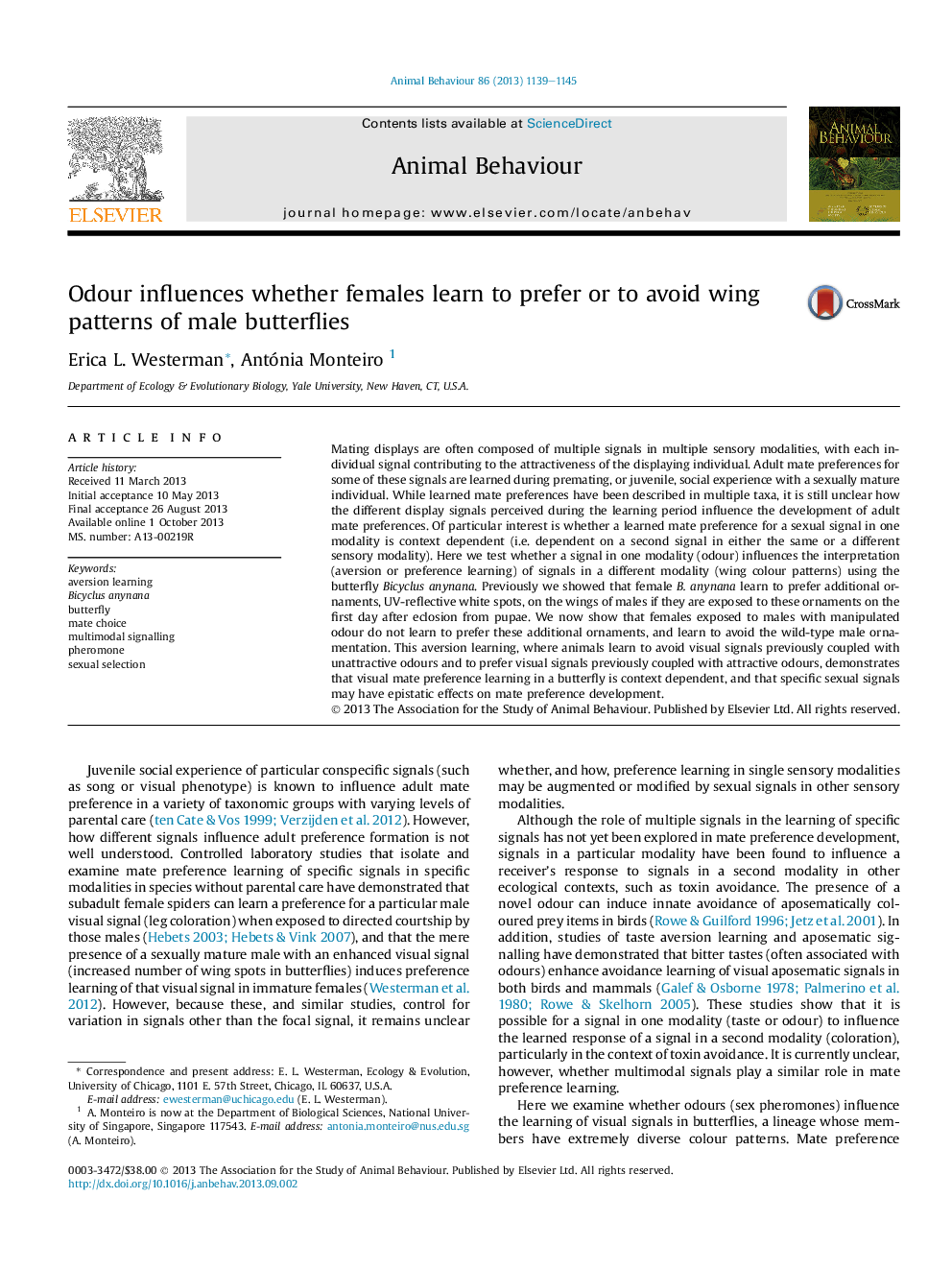| Article ID | Journal | Published Year | Pages | File Type |
|---|---|---|---|---|
| 10970630 | Animal Behaviour | 2013 | 7 Pages |
Abstract
Mating displays are often composed of multiple signals in multiple sensory modalities, with each individual signal contributing to the attractiveness of the displaying individual. Adult mate preferences for some of these signals are learned during premating, or juvenile, social experience with a sexually mature individual. While learned mate preferences have been described in multiple taxa, it is still unclear how the different display signals perceived during the learning period influence the development of adult mate preferences. Of particular interest is whether a learned mate preference for a sexual signal in one modality is context dependent (i.e. dependent on a second signal in either the same or a different sensory modality). Here we test whether a signal in one modality (odour) influences the interpretation (aversion or preference learning) of signals in a different modality (wing colour patterns) using the butterfly Bicyclus anynana. Previously we showed that female B. anynana learn to prefer additional ornaments, UV-reflective white spots, on the wings of males if they are exposed to these ornaments on the first day after eclosion from pupae. We now show that females exposed to males with manipulated odour do not learn to prefer these additional ornaments, and learn to avoid the wild-type male ornamentation. This aversion learning, where animals learn to avoid visual signals previously coupled with unattractive odours and to prefer visual signals previously coupled with attractive odours, demonstrates that visual mate preference learning in a butterfly is context dependent, and that specific sexual signals may have epistatic effects on mate preference development.
Keywords
Related Topics
Life Sciences
Agricultural and Biological Sciences
Animal Science and Zoology
Authors
Erica L. Westerman, Antónia Monteiro,
